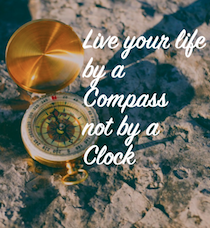Bouyage
Training Talks – Buoyage
Each week during lockdown we are hosting Free Training Talks on both a Tues and a Thurs. This week the topic was Buoyage. These sessions are free to join in, sit quietly or actively participate. We hope to record them shortly and upload to our YouTube channel. The full program can be found on our website calendar.
The sessions are intended as a refresher revision for some and a springboard into training for others. It cannot be a comprehensive all encompassing teaching session. If the concepts are new we suggest people enquire about further training and for those whose revision showed them to be rusty there are plenty of books guides and flip cards to aid revision.
Both evenings were well subscribed and with a wide variety of experience. It is great that so many people are coming along to listen. During the session Dom ran through the different buoyage that we may encounter out on the water.
Channel Marks:
Starting with lateral marks or channel marks, ‘greens and reds’ and a discussion about IALA A or B buoyage. This will depend on where you are in the world. We talked about the shapes, triangular for green starboard marks and cans or square for red port marks. He showed a variety of photos to illustrate the different size and style of buoy that may be encountered. Poole is a great example where even main channel marks can be quite different in style. We talked about the numbering system on buoys and that some might have names. The direction of travel and direction of buoyage was also clarified.
We had a great question from the audience tonight – Why is Hamish buoy in Poole Harbour called Hamish? Yet to be confirmed but the best answer I can find it that it was named after a past Harbour Master or Harbour Commissioner named Hamish Green.
Cardinal Marks:
We moved on the look at Cardinal marks and what they tell us plus the colours and the top marks. Dom was a little sneaky and asked for comments in the chat box. Most answers talked about danger but in fact they show us where the safest water is. For example a North Cardinal tells us that the Safest Water is to the North.
Now that leads onto the question how do you know where north is? Perhaps you have a great sense of directions, have looked at a chart or sensibly use a compass. It starts t illustrate the importance of a compass on board. When we undertake pilotage exercises on our PB2 courses, people are often initially confused about directions and which side to pass of a Cardinal even though they can successfully identify it. A skill to be practiced. In Poole Harbour they are often used to indicate where channels separate. The examples we looked at were Diver Buoy and Bell Buoy.
We then had a discussion about how people remember how to identify the different cardinals using the top marks. East Cardinals most people saw the outline of an Easter Egg although one saw the outline of the letter E. West Cardinals some people saw a wine glass, others a waist and others the outline of the letter W. For North Cardinals the top marks point up as if on a compass and for South downwards.
We talked about where these might be encountered, how they might affect different boaters and the colour banding on them.
Isolated Danger, Special Marks, Temporary Wreck, Fairway & Preferred Channel Marks:
Next was the Isolated Danger marks – places to be avoided. Locally we have one in the harbour, one outside the harbour and a particularly relevant one down the coast at Christchurch. Someone correctly identified the picture as being Gear Rock outside Penance. The importance of recognising that those which are buoys rather than posts will move with the tide was highlighted. And it seemed many remember isolated danger marks by associating them with Dennis the Menace – red and black stripes!
The wide variety of yellow special marks was next on the agenda and it seemed that most people had seen these in use, whether for swimming or PWC zones. We looked at the chart and discussed the seasonal use of many of these and chatted about racing marks.
Finally we looked at temporary wreck markers, fairway buoys, fixed lights and preferred channel markers. We chatted about examples and someone suggested ways to remember preferred channel marks.
What it looks like on the chart:
We then moved onto the chart, to identify what these marks would look like on paper or electronic devices. Those not local to Poole were fascinated by the number of channels and some a little intimidated by the number of marks. We talked a little about light but that is a topic for another night. Interestingly whilst looking at the charts we identified an error where a North Cardinal is incorrectly identified as a West Cardinal. We’re off to check the corrections to see if it has already been identified.
During the conversation someone made the comment that there seemed to be a lot of local knowledge. This prompted a chat about LNTMs (Local Notices to Mariners), Almanacs, Charts and Harbour Guides.
This session was a luxury for us. Normally on a course we only have a short time to discuss the buoyage whereas tonight we could discuss it in depth. The downside that for those who haven’t yet been out on the water is that putting the buoyage into context is very difficult. On a practical course if someone is struggling we are very quickly out on the water and it usually falls into place.
Thank you to all those who attended this week – great turnout on both evening and thank you so much for your lovely feedback. We have a full program of events – please visit our calendar for further information.
Next Steps:
If you are enjoying the series of talks you may be interested in one of our theory courses – RYA Essential Navigation, Day Skipper or Yachtmaster. Please visit our Online Courses Page for details.
Main events:
Tues 6.30pm and Thurs 8.30pm Free training Talks
Wed 10.30am Women on the Water Q&A
Thurs 10.30am Q&A Chat
Fri 7.30pm Quiz Night
The rest of the week has free tutorials for our students who are undertaking online courses in Day Skipper, Yachtmaster Essential Navigation, VHF Radio or PPR. Please visit our Web Calendar Page for details.











